December 2, 2013 | Posted in TRADITIONAL ART AND PAINTING | By sockii
Art and Appetite: American Painting, Culture, and Cuisine
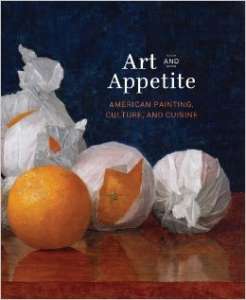
Art and Appetite Exhibit Catalog. Buy it now at Amazon.
On view at the Art Institute of Chicago through January 27, 2014, Art and Appetite: American Painting, Culture, and Cuisine is a wonderful exhibit that takes us through three centuries of American history — and how art has reflected our changing eating habits, diets and desires. Over one hundred paintings, sculptures, installations, and artifacts including period menus and cookbooks take us on a tour of America’s evolving “appetite” for food and cooking, from traditional fine dining to modern day convenience and fast food. It’s a wonderful exhibit that should appeal to both art lovers and “foodies” alike, as it gives a fascinating glimpse into aspects of our past that most people do not stop to contemplate. I would recommend it to anyone who might be in the Chicago area this winter, and the Art Institute as a whole is well worth spending a day if you are a lover of traditional and modern artwork.
Exploring Art and Appetite

Freedom From Want by Norman Rockwell. Buy This at Allposters.com
The exhibit’s first room spotlights the great American tradition of Thanksgiving and indeed features one of its most popular paintings: Norman Rockwell’s “Freedom from Want”. As an artist myself I was struck by how the painting just radiates light and warmth, how adeptly variations on cool and warm shades of white are employed to capture every thing from the dinner and glassware to the fabrics, the glow of sunshine coming into this family gathering. From a cultural standpoint it’s a striking image as it captures what’s become the stereotypical “traditional American family”: happy, and together and enjoying this most American of holidays. Curiously one should note that despite the grand turkey at the centerpiece of the meal, the rest of the table is rather sparse, perhaps due to World War II rationing: water, celery, one jellied substance and some covered dish, perhaps of gravy. I found myself wondering what it was specifically that drew such crowds to this one particular image: the great artistry on display, the familiarity of the image, or perhaps a deep longing in many to be a part of this warm and loving family gathering.

Bowl of Peaches by Raphael Peale. Buy This at Allposters.com
After this first room, the exhibit then follows a mostly chronological timeline. One room of the exhibit is, for instance, primarily devoted to the beautiful early 19th century still life paintings of Raphaelle Peale. These small, incredibly realistic paintings offer a tempting glimpse at the fruits and vegetables consumed and celebrated in the New World at the time, some as delicacies brought from afar. The exhibit even cleverly matches displays of some paintings with the actual service ware from the images, such as with Peale’s Stawberries, Nuts and Citrus. We see how prosperity and wealth would be reflected in a bounty of exotic fruits, how a pineapple would be considered an especially celebratory item to crown a dessert table or display.

Nighthawks by Edward Hopper. Buy This at Allposters.com
Other rooms explore changing habits of formal and informal dining in America. The picnic was a popular form of entertainment and social dining, captured in landscape paintings by such artists as Thomas Cole. The temperance movement was reflected in painted images of modest glasses of wine, and trompe-l’oeil artists made not-so-subtle social comments via highly realistic images of hanged potatoes, chicken carcasses, and roasted peanuts behind “broken glass”. In later parts of the exhibit we see how modern art reflected modern dining habits, from the popularity of restaurant dining as a relatively new concept (Italian restaurants were apparently the trendy “hipster” hangouts of the early 20th century), diners and supermarkets, and of course mass production and consumerism as reflected in images such as Andy Warhol’s Campbell’s Soup Can prints.
All in all, Art and Appetite effectively incorporates many items from AIC’s own collection with loans from other museums to paint a wonderful portrait of America’s changing food culture through the centuries. After seeing this exhibit, I suspect most of us will have an entirely new appreciation for how we eat — and perhaps never visit the supermarket quite the same way again.
Visiting the Art Institute of Chicago
The AIC is open daily from 10:30am – 5:00pm, with extended evening hours on Thursdays. Art and Appetite is included in the general admission price to the museum — discounted prices are available to students and residents of Chicago and Illinois.
While at the museum I recommend making reservations for lunch at Terzo Piano – the AIC’s full service restaurant spotlighting local, seasonal ingredients with Italian flair. The restaurant is even offering themed fixed-price menus inspired by Art and Appetite, making it a “perfect pairing” for a day exploring the exhibit.
Art Institute of Chicago
111 S Michigan Ave, Chicago, IL 60603
Related posts at Spacial Anomaly
Table of Contents
sockii
sockii is just your typical Jane-of-All-Trades who never has enough time in her day for all of her projects. She has written for many websites online including Squidoo, Zujava, Yahoo! Contributors Network, HubPages and Wizzley. She has been attending and vending at science fiction and media conventions for over 15 years, and for several years ran an art gallery and jewelry store in Philadelphia. Today she is happy to be living in South Jersey with her partner David and their 6 cats. Sockii is a member of several affiliate sales programs including Amazon Associates and Viglink. Products from these services may be advertised on her posts and pages to generate sales commissions.
Leave a Reply
*
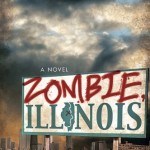
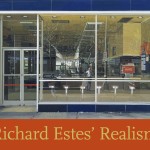
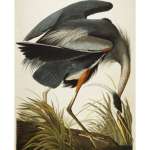
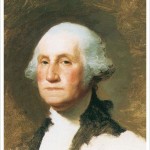








Be the first to comment.